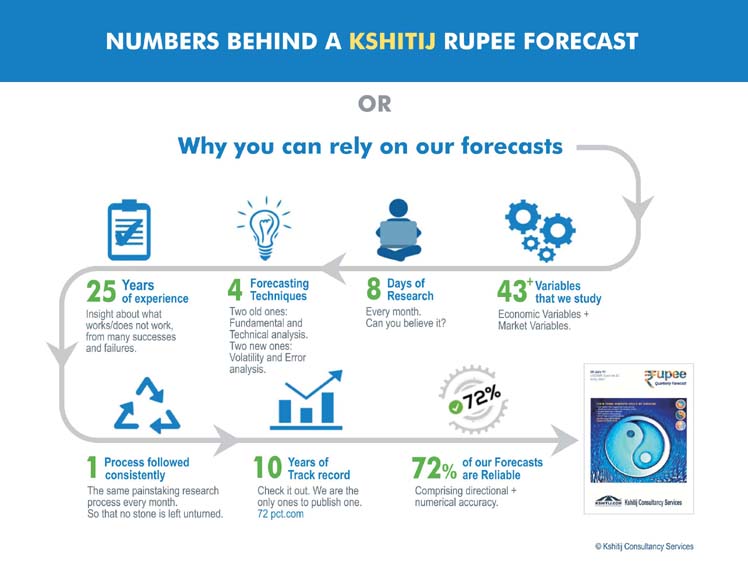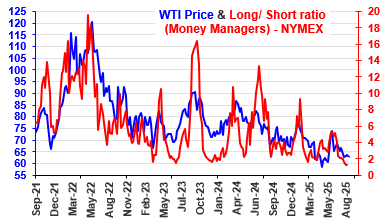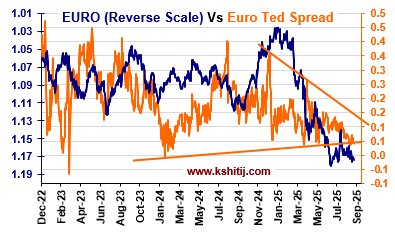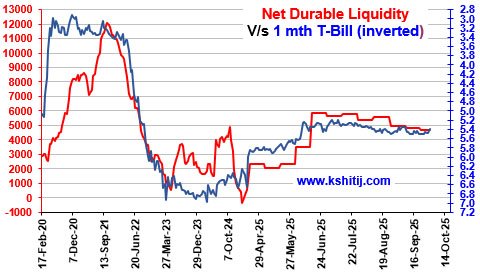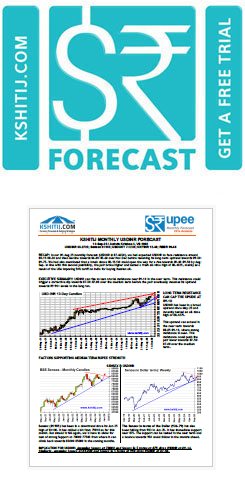A few words on the KSHITIJ Forecasting Process
Feb, 22, 2018 By Vikram Murarka 0 comments

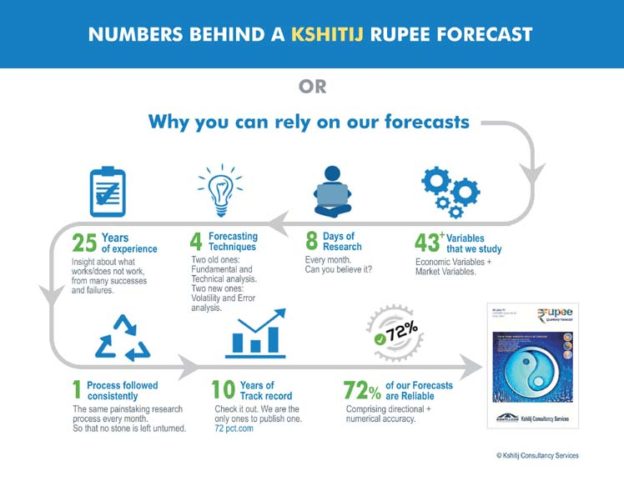
Forecasts? Everyone needs one.
“Nobody can forecast currencies” is an oft heard statement. This is a popular perception, perpetuated by academic literature of the time as well as statements from people in positions of power and responsibility.
Isn’t it strange, therefore, that everybody in the currency market wants to know where different currencies will go, whether they will strengthen or weaken? The simple fact is that it is a basic human need, even an essential business need, to want to know what the future holds.
Forecasts are needed by everybody, everywhere, not only in the currency markets. Everyone makes forecasts about everything and everyone wants to know the forecast about everything. Without forecasts, the business world and the financial markets would come to a stop. In the financial markets, traders closely track the forecasts made by the central banks, the forecasts or “guidance” made by companies and the forecasts made by the financial institutions on the quarterly results of the companies. Market prices react strongly when these “expectations”, which are nothing other than forecasts, are missed.
In the business world, the entire annual and quarterly budgeting process is an exercise in forecasting, without which it would be difficult to conduct operations efficiently. While budgeting, the businesses want to have an idea of what the demand scenario is going to be like, what will be the state of the economy, what will be the levels of interest rates and exchange rates in the next quarter, 2 quarters away, 1 year away or even 3 years away, how will commodity prices move? Forecasts are needed for all of these.
Where do we come in? We take on the “impossible” task of trying to forecast the currency markets and then even go further to take care of our Clients’ foreign exchange risks with the goal of reducing volatility and saving money for the Clients.
What makes our forecast valuable for our clients?
Our philosophy and approach to forecasting is what makes our forecast valuable to clients.
Synthesis is the cornerstone of our forecasting philosophy, in essence drawing strength from the “many”. There are many factors affecting a financial instrument in this intricately connected global financial market. We check all the factors that we know of closely and select the most pertinent ones. Nothing is unimportant unless it is proved worthless. Every month, we study some 50+ variables very systematically as part of our research process while making our monthly Dollar-Rupee forecasts.
We also synthesize many techniques within Technical Analysis – classical charting, trendlines, moving averages and Elliot Waves – while forecasting. In fact, we also synthesize three supposedly diverse techniques – Fundamental, Technical and Statistical analysis – to try and arrive at a more holistic forecast.
Our endeavour is to try and study the underlying ocean currents, so that we may better understand the waves on the surface. Most of the times, the underlying forces that drive the markets remain out of sight. To identify those forces and understand their implications is our primary target. In order to be able to do that, we not only study market variables themselves, but we also do a lot of inter-market and ratio analysis, correlation studies and regression studies.
Interestingly, we have also recently started studying the pattern of our own past errors to see if they can give us advance warnings of unanticipated market movements.
In short, we try and leave no stone unturned while trying to arrive at our forecasts.
Trying to minimize surprises
To think of it, why do forecasts tend to go wrong? A gross beginner’s forecasts tend to go wrong simply because he is new to the craft. Later on, a forecaster with 2-5 years of experience might go wrong because he might not have exercised the required due diligence. Even after rising further in experience, a more seasoned forecaster might end up making mistakes if he happens to succumb to his biases. It is to control all these factors that the need for more rigorous analysis starts being felt. And in fact, if these are dealt with there is a good chance that the forecaster may start to achieve reliability in the 55-57% region, maybe even in the 60-62% region.
Therefore, if all these factors are taken care of, a forecast would go wrong only if surprises happen to hit the market. So, to increase reliability levels to 70% and beyond that to 75-80%, the effort has to be to try and be as informed as possible, so as to minimize the chances of being surprised. In effect, this is the same as taking a look at as many factors as you can, in as many ways as you can, so that you leave no stone unturned.
In other words, a wide ranging study of variables and an approach of synthesis (as opposed to reliance on any one or two methods of analysis) is merely an enlightened survival technique.
Going into the next level
Thinking ahead, perhaps the way to pull forecast reliability above the 75-80% threshold would be to actively study the times when we have gone wrong, when we have been surprised, and to study the instances when correlations, that are normally seen to work in the market, happen to fail.
We intend to start working on these. There will surely be hurdles to cross, mistakes to be made, frustrations to be endured. However, at the end of it, hopefully we will be able to move our forecasting reliability to the next higher level.
Inshallah.
Array
In our last report (29-Jul-25, UST10Yr 4.42%) we expected the FED to remain on hold and said that since data was inconclusive the US10Yr was likely to be indecisively ranged in August, with a bit of …. Read More
The WTI Long-Short position (CFTC) has broken below multi-year lows and could now head towards the Oct-06 low of (1.13) indicating that Crude prices could continue to see … Read More
In our August 2025 outlook (dated 11-Aug-2025, EURUSD at 1.1623), we projected the Euro to strengthen towards 1.19–1.20 over the following months, before retreating to 1.14 by December 2025 and further easing to …. Read More
In our 10-Sep-25 report (10Yr GOI 6.48%) we expected the RBI to be on pause in its next MPC meeting on 01-Oct. This is to be seen tomorrow. We had also said there was room for the FOMC to cut rates by 25-50bp, and accordingly they … Read More
In our 08-Aug-25 report (USDJPY 147.24), we expected the USDJPY to initially fall to 145-144, followed by a consolidation between 144-152 till Feb-26 before eventually ascending towards 155. In actuality, the pair limited the downside to … Read More
Our September ’25 Dollar Rupee Monthly Forecast is now available. To order a PAID copy, please click here and take a trial of our service.
- Kshitij Consultancy Services
- Email: info@kshitij.com
- Ph: 00-91-33-24892010
- Mobile: +91 9073942877

